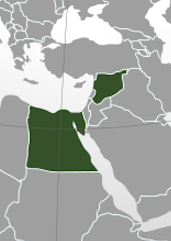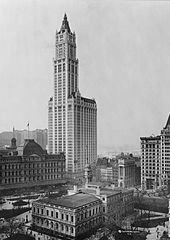Egypt and Syria: Beyond Repair
What do an insolvent Egypt and a disintegrating Syria mean for the governance of the Middle East?
June 25, 2013

Egypt and Syria suffer from the same problems that cannot be repaired. That is a sad and admittedly very categorical statement.
But such are the consequences when political leaders misread the domestic cards and, instead of working to repair their economies and deal with the specifics of demonstrations, choose to respond with violence.
That only causes what is legitimate social and political unrest to morph into political protests that spiral out of control and cause the autocratic leaders’ downfall.
This is what happened in Egypt and what is now happening in Syria. In both cases, the door was opened for the reemergence of the Islamists who had been kept under lock and key by the strongmen.
Let us recall the path to disaster. The economies in the Middle East-North Africa region began to decline in advance of the beginning of the global financial crisis which started about mid-way through 2007. Then came a rise in food prices in 2008 that caused a bit of unrest, but food prices accelerated in 2010 and began to soar.
This set the stage for the Arab Spring. The cost for Egypt to supply food and fuel staples to the people, trebled from 2006 to 2011. Without any adequate income from energy exports, the country was in no position to cope with these fundamental changes.
Mubarak’s downfall was in the cards as early as October 2010 when he informed his military that he would bypass its leadership and name his son Gamel as his successor.
It was just a matter of time before the Generals would move to replace Mubarak. They used the opportunity provided by the Arab Spring to do so.
It should have been obvious to anyone who took a sharp pencil to Egypt’s economic numbers. Egypt’s dependency on imports for 50% of its food and energy subsidies that in turn ate 25% of its annual budget was a bottomless pit.
The same was happening in Syria where the regime failed to modernize its agricultural system. This failure to reform led to hundreds of thousand of farmers giving up and moving to slums in both countries’ cities.
It has been a time-tested pattern of third world strongmen like Mubarak and Assad to keep their farmers and other members of the rural population poor, illiterate and isolated. Why? So as to better control them.
However, when the cities in Egypt and Syria began to swell with the rural poor, it became just a matter of time before this straw broke the camel’s back.
Egypt may be considered the leading culture in the Arab world. In hard economic reality, it is a pre-modern society with an underemployment rate of about 40%, an illiteracy rate of almost 50% — and nearly a 90% rate of female genital mutilation.
Neither Egypt nor Syria have significant energy export revenue streams with which to offset their leaders’ poor economic decisions, and elite families dominate the bazaar economies of both.
As recently as 2011, no one in the West recognized the true reasons for the revolts in these countries.
Almost everyone just assumed it was a clash between the new culture of the tech-savvy youth and the old hierarchy.
But this was not the case. It was the economy, stupid!
Back in 2011, it took about an extra $20 billion a year to keep Egypt’s economy stable. That number has now risen to about $25 billion. In a country with a GDP of under $230 billion, that is a staggering number.
Not even a miracle worker could have fixed that situation. And the Muslim Brotherhood certainly isn’t that. The economic incompetence of President Morsi’s government is now indisputable.
In fact, it is only deepened Mubarak’s previous mistakes. It keeps focusing on political issues when the only thing that could make a difference would be deep economic restructuring.
Egypt’s army doesn’t have a solution either, and this is the main reason it doesn’t want to take over control.
Yes, there were infusions of cash that flowed into Egypt from Libya, Qatar and Saudi Arabia.
But make no mistake, they were isolated events to keep things stable while these countries went about the serious business at hand — preparing for a greater region-wide Sunni/Shi’ite conflict.
None of these countries (or those in the West) are prepared to prop up Egypt and throw money down a bottomless pit.
According to the World Health Organization, fully 25% of Egypt’s population is malnourished. That is a tragedy.
Emergency loans slowed the hemorrhaging, but did not stop it. Even though the Muslim Brotherhood is now promising a bumper wheat crop, the farmers don’t believe it and it will not come. Egypt is on death’s door.
Both of these disasters in Egypt and Syria were just waiting to happen.
The rise of the Islamists in Syria, who took over the largely secular economic protests against the regime’s corrupt control of the economy, was partly fueled by reemergence of its own Muslim Brotherhood and partly out of fear of the regional ascendancy of the Shi’ites led by Iran.
This has reignited the centuries-old conflict between the dominant sects of Islam, which has been marred by extreme violence, as religious wars always have.
There are now two possible outcomes in Syria. One is a split state, with parts controlled by Shia Alawites, Sunnis, Kurds and a hodgepodge of Druze/Christian groups. The second is a state dominated by a Sunni/Muslim Brotherhood hierarchy.
Whatever happens, Egypt and Syria are two failed states that cannot be repaired.
Read previous

America: The Next Woolworth’s?
June 24, 2013
